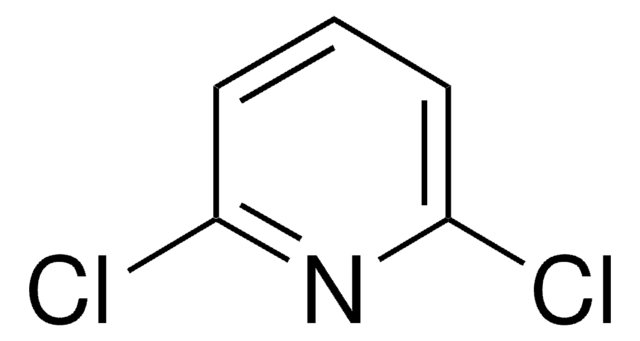456543
2,6-Dichloropyridine-4-carboxylic acid
98%
Synonym(s):
2,6-Dichloroisonicotinic acid
Sign Into View Organizational & Contract Pricing
All Photos(1)
About This Item
Empirical Formula (Hill Notation):
C6H3Cl2NO2
CAS Number:
Molecular Weight:
192.00
MDL number:
UNSPSC Code:
12352100
PubChem Substance ID:
NACRES:
NA.22
Recommended Products
Assay
98%
form
solid
mp
209-212 °C (lit.)
functional group
carboxylic acid
chloro
SMILES string
OC(=O)c1cc(Cl)nc(Cl)c1
InChI
1S/C6H3Cl2NO2/c7-4-1-3(6(10)11)2-5(8)9-4/h1-2H,(H,10,11)
InChI key
SQSYNRCXIZHKAI-UHFFFAOYSA-N
Related Categories
Signal Word
Warning
Hazard Statements
Precautionary Statements
Hazard Classifications
Eye Irrit. 2 - Skin Irrit. 2 - STOT SE 3
Target Organs
Respiratory system
Storage Class Code
11 - Combustible Solids
WGK
WGK 3
Flash Point(F)
Not applicable
Flash Point(C)
Not applicable
Personal Protective Equipment
dust mask type N95 (US), Eyeshields, Gloves
Choose from one of the most recent versions:
Already Own This Product?
Find documentation for the products that you have recently purchased in the Document Library.
M Rauscher et al.
The Plant journal : for cell and molecular biology, 19(6), 625-633 (1999-11-26)
Treatment of broad bean leaves with salicylic acid (SA) or 2, 6-dichloro-isonicotinic acid (DCINA) induces resistance against the rust fungus Uromyces fabae resulting in reduced rust pustule density. Light-microscopy studies showed that in induced resistant plants the rust fungus is
Z H He et al.
Plant molecular biology, 39(6), 1189-1196 (1999-06-25)
WAK1 (wall-associated kinase 1) is a cytoplasmic serine/threonine kinase that spans the plasma membrane and extends into the extracellular region to bind tightly to the cell wall. The Wak1 gene was mapped and found to lie in a tight cluster
Jan M Lucht et al.
Nature genetics, 30(3), 311-314 (2002-02-12)
Evolution is based on genetic variability and subsequent phenotypic selection. Mechanisms that modulate the rate of mutation according to environmental cues, and thus control the balance between genetic stability and flexibility, might provide a distinct evolutionary advantage. Stress-induced mutations stimulated
R Subramaniam et al.
Nature biotechnology, 19(8), 769-772 (2001-08-02)
The protein NPR1/NIM1 is required for the induction of systemic acquired resistance (SAR) in plants and has been shown to interact with members of the TGA/OBF family of basic leucine zipper (bZIP) transcription factors. However, to date, there is no
Yuelin Zhang et al.
The Plant cell, 15(11), 2647-2653 (2003-10-25)
Arabidopsis nonexpresser of pathogenesis-related (PR) genes (NPR1) is the sole positive regulator that has been shown to be essential for the induction of systemic acquired resistance. In npr1 mutant plants, salicylic acid (SA)-mediated PR gene expression and pathogen resistance are
Our team of scientists has experience in all areas of research including Life Science, Material Science, Chemical Synthesis, Chromatography, Analytical and many others.
Contact Technical Service








